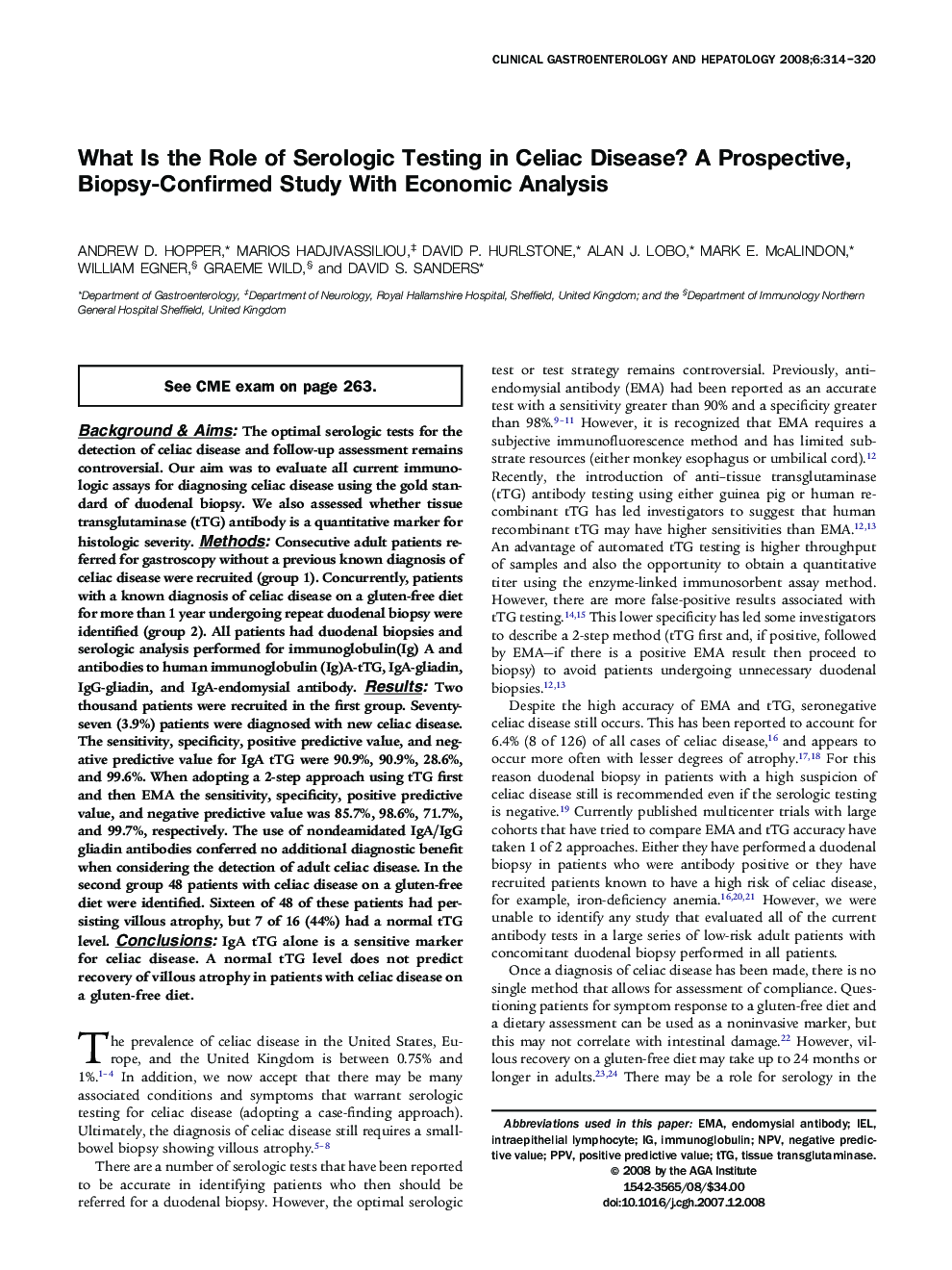| کد مقاله | کد نشریه | سال انتشار | مقاله انگلیسی | نسخه تمام متن |
|---|---|---|---|---|
| 3284815 | 1209213 | 2008 | 7 صفحه PDF | دانلود رایگان |
عنوان انگلیسی مقاله ISI
What Is the Role of Serologic Testing in Celiac Disease? A Prospective, Biopsy-Confirmed Study With Economic Analysis
دانلود مقاله + سفارش ترجمه
دانلود مقاله ISI انگلیسی
رایگان برای ایرانیان
کلمات کلیدی
IELEMATTGPPVEndomysial antibody - آنتی بادی Endomysialpositive predictive value - ارزش پیش بینی مثبتnegative predictive value - ارزش پیش بینی منفیimmunoglobulin - ایمونوگلوبولینTissue transglutaminase - ترانس گلوتامیناز بافتیIntraepithelial lymphocyte - لنفوسیت داخل اپیتلیالNPV یا negative predictive value - مقادیر پیش بینی شده منفی
موضوعات مرتبط
علوم پزشکی و سلامت
پزشکی و دندانپزشکی
بیماریهای گوارشی
پیش نمایش صفحه اول مقاله

چکیده انگلیسی
Background & Aims: The optimal serologic tests for the detection of celiac disease and follow-up assessment remains controversial. Our aim was to evaluate all current immunologic assays for diagnosing celiac disease using the gold standard of duodenal biopsy. We also assessed whether tissue transglutaminase (tTG) antibody is a quantitative marker for histologic severity. Methods: Consecutive adult patients referred for gastroscopy without a previous known diagnosis of celiac disease were recruited (group 1). Concurrently, patients with a known diagnosis of celiac disease on a gluten-free diet for more than 1 year undergoing repeat duodenal biopsy were identified (group 2). All patients had duodenal biopsies and serologic analysis performed for immunoglobulin(Ig) A and antibodies to human immunoglobulin (Ig)A-tTG, IgA-gliadin, IgG-gliadin, and IgA-endomysial antibody. Results: Two thousand patients were recruited in the first group. Seventy-seven (3.9%) patients were diagnosed with new celiac disease. The sensitivity, specificity, positive predictive value, and negative predictive value for IgA tTG were 90.9%, 90.9%, 28.6%, and 99.6%. When adopting a 2-step approach using tTG first and then EMA the sensitivity, specificity, positive predictive value, and negative predictive value was 85.7%, 98.6%, 71.7%, and 99.7%, respectively. The use of nondeamidated IgA/IgG gliadin antibodies conferred no additional diagnostic benefit when considering the detection of adult celiac disease. In the second group 48 patients with celiac disease on a gluten-free diet were identified. Sixteen of 48 of these patients had persisting villous atrophy, but 7 of 16 (44%) had a normal tTG level. Conclusions: IgA tTG alone is a sensitive marker for celiac disease. A normal tTG level does not predict recovery of villous atrophy in patients with celiac disease on a gluten-free diet.
ناشر
Database: Elsevier - ScienceDirect (ساینس دایرکت)
Journal: Clinical Gastroenterology and Hepatology - Volume 6, Issue 3, March 2008, Pages 314-320
Journal: Clinical Gastroenterology and Hepatology - Volume 6, Issue 3, March 2008, Pages 314-320
نویسندگان
Andrew D. Hopper, Marios Hadjivassiliou, David P. Hurlstone, Alan J. Lobo, Mark E. McAlindon, William Egner, Graeme Wild, David S. Sanders,